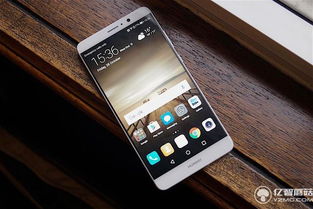树形下拉菜单是许多WPF应用程序中常见的用户界面元素,它能够以分层的方式展示数据,提供更好的用户体验。本文将深入探讨如何基于WPF创建一个可定制的树形下拉菜单控件,涵盖从原理到实际实现的关键步骤。
一.需求分析
树形下拉菜单控件的核心是将ComboBox与TreeView结合起来,以实现下拉时的树状数据展示。在WPF中,可以通过自定义控件模板、样式和数据绑定来实现这一目标。
我们首先来分析一下ComboBox控件的模板。
<ControlTemplate x:Key=\"ComboBoxTemplate\" TargetType=\"{x:Type ComboBox}\"> <Grid x:Name=\"templateRoot\" SnapsToDevicePixels=\"true\"> <Grid.ColumnDefinitions> <ColumnDefinition Width=\"*\"/> <ColumnDefinition MinWidth=\"{DynamicResource {x:Static SystemParameters.VerticalScrollBarWidthKey}}\" Width=\"0\"/> Grid.ColumnDefinitions> <Popup x:Name=\"PART_Popup\" AllowsTransparency=\"true\" Grid.ColumnSpan=\"2\" IsOpen=\"{Binding IsDropDownOpen, Mode=TwoWay, RelativeSource={RelativeSource Mode=TemplatedParent}}\" Margin=\"1\" Placement=\"Bottom\" PopupAnimation=\"{DynamicResource {x:Static SystemParameters.ComboBoxPopupAnimationKey}}\"> <theme:SystemDropShadowChrome x:Name=\"shadow\" Color=\"Transparent\" MinWidth=\"{Binding ActualWidth, ElementName=templateRoot}\" MaxHeight=\"{TemplateBinding MaxDropDownHeight}\"> <Border x:Name=\"dropDownBorder\" Background=\"{DynamicResource {x:Static SystemColors.WindowBrushKey}}\" BorderBrush=\"{DynamicResource {x:Static SystemColors.WindowFrameBrushKey}}\" BorderThickness=\"1\"> <ScrollViewer x:Name=\"DropDownScrollViewer\"> <Grid x:Name=\"grid\" RenderOptions.ClearTypeHint=\"Enabled\"> <Canvas x:Name=\"canvas\" HorizontalAlignment=\"Left\" Height=\"0\" VerticalAlignment=\"Top\" Width=\"0\"> <Rectangle x:Name=\"opaqueRect\" Fill=\"{Binding Background, ElementName=dropDownBorder}\" Height=\"{Binding ActualHeight, ElementName=dropDownBorder}\" Width=\"{Binding ActualWidth, ElementName=dropDownBorder}\"/> Canvas> <ItemsPresenter x:Name=\"ItemsPresenter\" KeyboardNavigation.DirectionalNavigation=\"Contained\" SnapsToDevicePixels=\"{TemplateBinding SnapsToDevicePixels}\"/> Grid> ScrollViewer> Border> theme:SystemDropShadowChrome> Popup> <ToggleButton x:Name=\"toggleButton\" Background=\"{TemplateBinding Background}\" BorderBrush=\"{TemplateBinding BorderBrush}\" BorderThickness=\"{TemplateBinding BorderThickness}\" Grid.ColumnSpan=\"2\" IsChecked=\"{Binding IsDropDownOpen, Mode=TwoWay, RelativeSource={RelativeSource Mode=TemplatedParent}}\" Style=\"{StaticResource ComboBoxToggleButton}\"/> <ContentPresenter x:Name=\"contentPresenter\" ContentStringFormat=\"{TemplateBinding SelectionBoxItemStringFormat}\" ContentTemplate=\"{TemplateBinding SelectionBoxItemTemplate}\" Content=\"{TemplateBinding SelectionBoxItem}\" ContentTemplateSelector=\"{TemplateBinding ItemTemplateSelector}\" HorizontalAlignment=\"{TemplateBinding HorizontalContentAlignment}\" IsHitTestVisible=\"false\" Margin=\"{TemplateBinding Padding}\" SnapsToDevicePixels=\"{TemplateBinding SnapsToDevicePixels}\" VerticalAlignment=\"{TemplateBinding VerticalContentAlignment}\"/> Grid>ControlTemplate>从以上代码可以看出,其中的Popup控件就是下拉部分,那么按照常理,我们在Popup控件中放入一个TreeView控件即可实现该需求,但是现实情况远没有这么简单。我们开发一个控件,不仅要从外观上实现功能,还需要考虑数据绑定、事件触发、自定义模板等方面的问题,显然,直接放置一个TreeView控件虽然也能实现功能,但是从封装的角度看,它并不优雅,使用也不方便。那么有没有更好的方法满足以上需求呢?下面提供另一种思路,其核心思想就是融合ComboBox控件与TreeView控件模板,让控件既保留TreeView的特性,又拥有ComboBox的外观。
二.代码实现
2.1 编辑TreeView模板;
2.2 提取ComboBox的模板代码;
2.3 将ComboBox的模板代码移植到TreeView模板中;
2.4 将TreeView模板包含ItemsPresenter部分的关键代码放入ComboBox模板中的Popup控件内;
以下为融合后的xaml代码
<ControlTemplate TargetType=\"{x:Type local:TreeComboBox}\"> <Grid x:Name=\"templateRoot\" SnapsToDevicePixels=\"true\"> <Grid.ColumnDefinitions> <ColumnDefinition Width=\"*\" /> <ColumnDefinition Width=\"0\" MinWidth=\"{DynamicResource {x:Static SystemParameters.VerticalScrollBarWidthKey}}\" /> Grid.ColumnDefinitions> <Popup x:Name=\"PART_Popup\" Grid.ColumnSpan=\"2\" MaxHeight=\"{TemplateBinding MaxDropDownHeight}\" Margin=\"1\" AllowsTransparency=\"true\" IsOpen=\"{Binding IsDropDownOpen, Mode=TwoWay, RelativeSource={RelativeSource Mode=TemplatedParent}}\" Placement=\"Bottom\" PopupAnimation=\"{DynamicResource {x:Static SystemParameters.ComboBoxPopupAnimationKey}}\"> <Border x:Name=\"PART_Border\" Width=\"{Binding RelativeSource={RelativeSource AncestorType=local:TreeComboBox}, Path=ActualWidth}\" Background=\"{DynamicResource {x:Static SystemColors.WindowBrushKey}}\" BorderBrush=\"{DynamicResource {x:Static SystemColors.WindowFrameBrushKey}}\" BorderThickness=\"1\" SnapsToDevicePixels=\"true\"> <ScrollViewer x:Name=\"_tv_scrollviewer_\" Padding=\"{TemplateBinding Padding}\" Background=\"{TemplateBinding Background}\" CanContentScroll=\"false\" Focusable=\"false\" HorizontalScrollBarVisibility=\"{TemplateBinding ScrollViewer.HorizontalScrollBarVisibility}\" SnapsToDevicePixels=\"{TemplateBinding SnapsToDevicePixels}\" VerticalScrollBarVisibility=\"{TemplateBinding ScrollViewer.VerticalScrollBarVisibility}\"> <ItemsPresenter /> ScrollViewer> Border> Popup> <ToggleButton x:Name=\"toggleButton\" Grid.ColumnSpan=\"2\" Background=\"{TemplateBinding Background}\" BorderBrush=\"{TemplateBinding BorderBrush}\" BorderThickness=\"{TemplateBinding BorderThickness}\" IsChecked=\"{Binding IsDropDownOpen, Mode=TwoWay, RelativeSource={RelativeSource Mode=TemplatedParent}}\" Style=\"{StaticResource ComboBoxToggleButton}\" /> <ContentPresenter x:Name=\"contentPresenter\" Margin=\"{TemplateBinding Padding}\" HorizontalAlignment=\"{TemplateBinding HorizontalContentAlignment}\" VerticalAlignment=\"{TemplateBinding VerticalContentAlignment}\" Content=\"{TemplateBinding SelectionBoxItem}\" ContentTemplate=\"{TemplateBinding SelectionBoxItemTemplate}\" IsHitTestVisible=\"False\" /> Grid> <ControlTemplate.Triggers> <Trigger Property=\"IsEnabled\" Value=\"false\"> <Setter TargetName=\"PART_Border\" Property=\"Background\" Value=\"{DynamicResource {x:Static SystemColors.ControlBrushKey}}\" /> Trigger> <Trigger Property=\"VirtualizingPanel.IsVirtualizing\" Value=\"true\"> <Setter TargetName=\"_tv_scrollviewer_\" Property=\"CanContentScroll\" Value=\"true\" /> Trigger> <MultiTrigger> <MultiTrigger.Conditions> <Condition Property=\"IsGrouping\" Value=\"true\" /> <Condition Property=\"VirtualizingPanel.IsVirtualizingWhenGrouping\" Value=\"false\" /> MultiTrigger.Conditions> <Setter Property=\"ScrollViewer.CanContentScroll\" Value=\"false\" /> MultiTrigger> ControlTemplate.Triggers>ControlTemplate>以下为使用控件的代码。
<TreeComboBox Width=\"315\" MinHeight=\"30\" Padding=\"5\" HorizontalAlignment=\"Center\" VerticalAlignment=\"Top\" VerticalContentAlignment=\"Stretch\" IsAutoCollapse=\"True\" ItemsSource=\"{Binding Collection}\"> <TreeComboBox.SelectionBoxItemTemplate> <ItemContainerTemplate> <Border> <TextBlock VerticalAlignment=\"Center\" Text=\"{Binding Property1}\" /> Border> ItemContainerTemplate> TreeComboBox.SelectionBoxItemTemplate> <TreeComboBox.ItemTemplate> <HierarchicalDataTemplate ItemsSource=\"{Binding Collection}\"> <TextBlock Margin=\"5,0,0,0\" VerticalAlignment=\"Center\" Text=\"{Binding Property1}\" /> HierarchicalDataTemplate> TreeComboBox.ItemTemplate>TreeComboBox>三.运行效果
3.1 单选效果
单选效果
3.2 多选效果
多选效果
四.个性化外观
当控件默认外观无法满足需求时,我们可以通过编辑样式的方式来实现个性化外观,也可以引用第三方UI库样式,以下为使用MaterialDesign的效果。
4.1 单选效果
单选效果
4.2 多选效果
多选效果
阅读前请先查看【免责声明】本文内容由互联网用户自发贡献,该文观点仅代表作者本人,本站仅供展示。如发现本站有涉嫌抄袭侵权/违法违规的内容,请发送邮件至 1217266901@qq.com 举报,一经查实,本站将立刻删除。 转载请注明出处:https://jingfakeji.com/tech/45880.html







